Charger Efest LUC Blu6 OLED
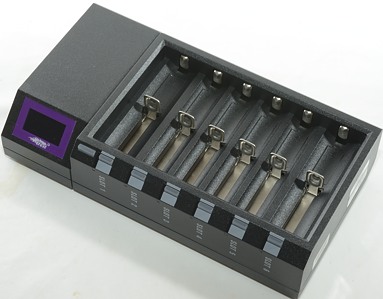
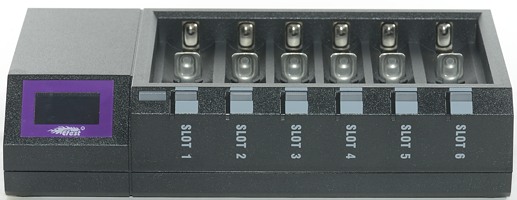
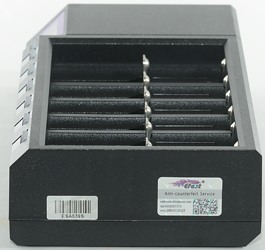
This is a 6 slot LiIon charger with 3 charge current from 0.5A to 2A (Only for two cells).
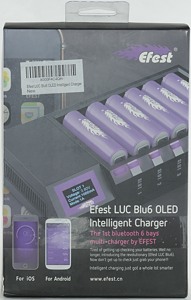

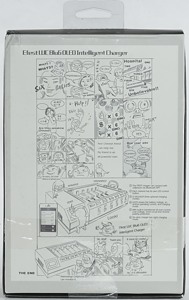

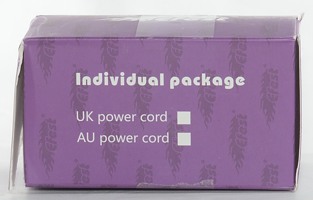
The charger comes in a cardboard box without much information on, but it has a comic on the back. I got the mains lead in a separate box.
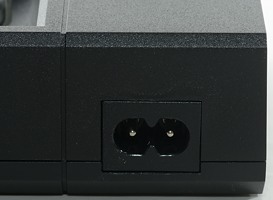
The power input socket is universal voltage (100-240VAC 47-63Hz).
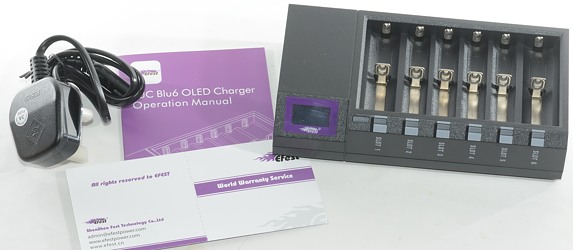
The charger included the charger, a mains lead, a user manual and a warranty card.
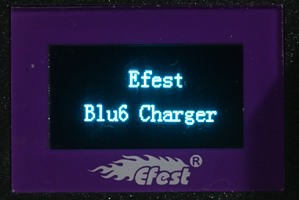
Welcome message on the display.
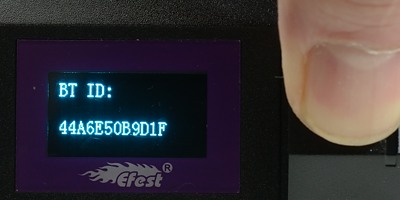
Bluetooth id, this is only needed if you have multiple chargers and want to get the correct one connected to the phone.
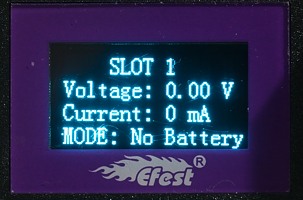
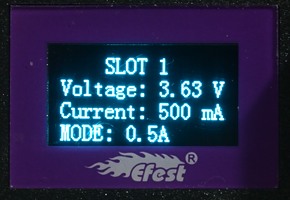
Usual the display will change between the six slots, showing the status.

The charger has 7 buttons, one for each slot and one for general functions (Like changing current for selected slot, turning the display off and showing the Bluetooth id). The other six buttons are used to select a slot. The button interface is a bit fiddly, because the charger can be a bit slow to response.
While charging the buttons are flashing blue, this will change to steady blue when the battery is full.

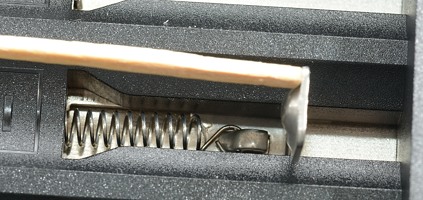
The charger uses the usual slider construction and support from 32.6mm to 71.6mm, this means even long protected cells are supported.


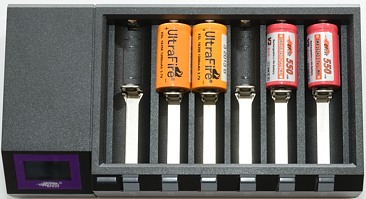
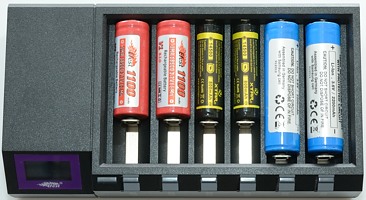
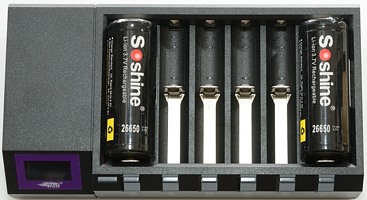
The low current setting is a bit high for 10440. The charger can handle above 71mm long cells, with both flat and button tops cells.
Phone interface
The charger can be linked to a smart phone, I have tested with a HTC One A7.
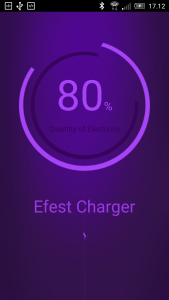

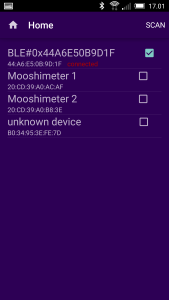
While starting the phone shows a percent count, then it goes to the slot view, the one shown here is when no charger is selected.
Press the icon on the top line to select a charger, the phone will automatic search for available Bluetooth devices.
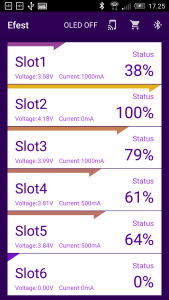
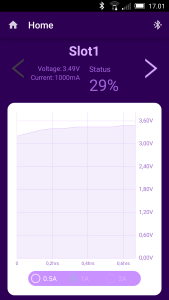

Here the slot view is shown while charging, tapping on any of the slots will show a status for that slot, where it is possible to select charge current. Charge current can be changed at any time during charging. It looks like the charge curve is stored in the charge, the app do not need to run during charge to get the full curve.
The "OLED OFF" text can be tapped to turn the display on the charger off or on again.
Measurements
- Only slot #1 and #6 supports 2A
- Any four slots can charge with 1A
- All slots can charge with 0.5A
- Total charge current is 4A
- A battery is recognized at about 1.9 volt.
- Will pulse charge current from 0 volt.
- Voltmeter is within 0.03 volt
- Voltmeter display freezes when charging stops.
- Current is show in 0.1A steps.
- Discharged with 1.7mA when power is off.
- Discharges with 1.4mA when connected to power.
- Charger will not restart if battery voltage drops.
- Charger will restart charging after power loss, or battery insertion.
- Power consumption when idle is 0.6 watt
%20%231.png)
Charge current is not very stable, but that is not important. Generally it is a good CC/CV charge curve, but I would have like the termination current a bit lower.
%20%232.png)
%20%233.png)
%20%234.png)
%20%235.png)
%20%236.png)
All slots looks about the same.
%20%231.png)
The termination current is not reduced when charging at 0.5A.
%20%231.png)
No problems with the 2600mAh cell.
%20%231.png)
The older cell shows more noise, but the average is still fine.
%20%231.png)
%20%231.png)
The two small cells are charged, but due to the high termination current they are missing a few percent in a full charge.
.png)
With 6 cells in the charger it can only charge at 0.5A (Two cells can be charged at 1A). The termination looks a bit premature.
.png)
The 2A charge looks fairly good.
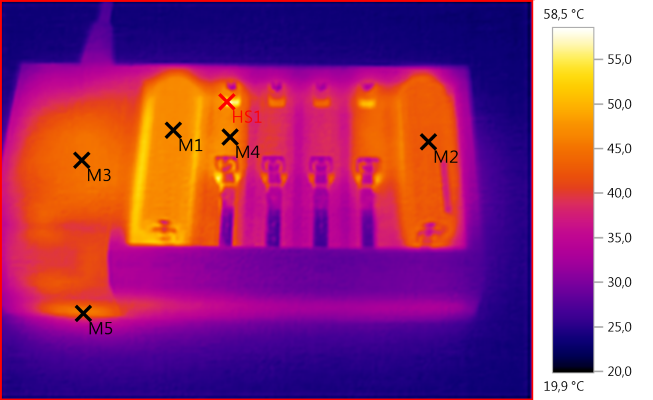
M1: 46,5°C, M2: 42,4°C, M3: 44,9°C, M4: 47,0°C, M5: 45,2°C, HS1: 58,5°C
It is no surprise that a 2A charge generates some heat.
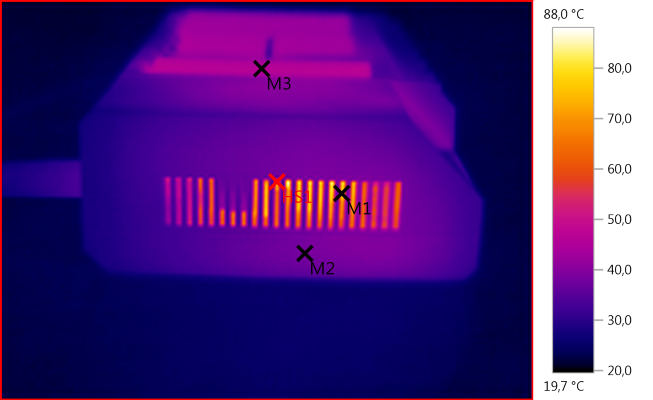
M1: 75,0°C, M2: 38,3°C, M3: 46,2°C, HS1: 88,0°C
And some parts inside the charger gets rather hot.
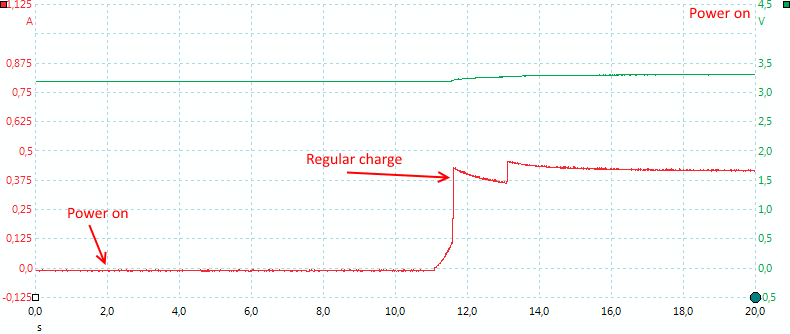
This charger has a lot of internal functions to initialize, this means it takes about 10 seconds to power on.
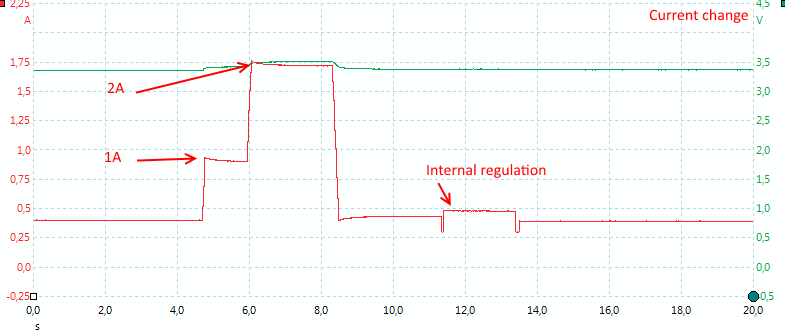
Charge current can be changed at any time.
Testing with 2500 volt and 5000 volt between mains and low volt side, did not show any safety problems.
Conclusion
This charger can charge most sizes of LiIon cells and up to 6 at a time, the charge curve may look at bit noise, but it works fine.
The user interface on the charger works, but not perfectly. The interface on my smart phone works very well.
It would have been nice with more charge current available, but looking at the temperature photos the 4A limit is probably a good idea.
All in all a fairly good charger if you have many LiIon cells to charge.
Notes
Here is an explanation on how I did the above charge curves: How do I test a charger




























%20%231.png)
%20%232.png)
%20%233.png)
%20%234.png)
%20%235.png)
%20%236.png)
%20%231.png)
%20%231.png)
%20%231.png)
%20%231.png)
%20%231.png)
.png)
.png)



